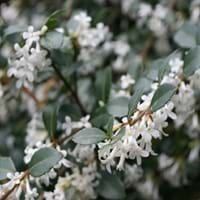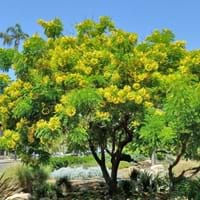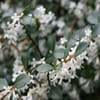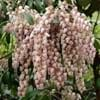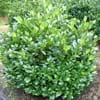Life Span
Annual and Perennial
Perennial
Type
Broadleaf Evergreen
Flowering Plants, Tree
Types
Not Available
Not Available
Habitat
Lowland, shaded fields, Shaded sites, Slopes, Subtropical climates
Not Available
USDA Hardiness Zone
7-99
Not Available
AHS Heat Zone
Not Available
Not Available
Sunset Zone
21,22
Not Available
Habit
Oval or Rounded
Upright/Erect
Flower Color
White
Yellow
Flower Color Modifier
Bicolor
Bicolor
Fruit Color
Dark Blue, Black
Not Available, White
Leaf Color in Spring
Gray Green, Dark Green
Dark Green
Leaf Color in Summer
Dark Green
Dark Green
Leaf Color in Fall
Gray Green, Dark Green
Dark Green
Leaf Color in Winter
Gray Green, Dark Green
Dark Green
Plant Season
Spring, Summer, Fall, Winter
Spring, Summer, Fall
Sunlight
Full Sun, Partial Sun, Partial shade
Partial shade, Full Shade
Type of Soil
Clay, Loam, Sand
Loam
The pH of Soil
Acidic, Neutral, Alkaline
Acidic, Neutral, Alkaline
Soil Drainage
Well drained
Well drained
Bloom Time
Early Spring, Late Winter
Indeterminate, Summer
Tolerances
Drought
Drought
Where to Plant?
Ground, Pot
Ground
How to Plant?
Seedlings, Vegetative Reproduction
Seedlings, Stem Planting
Plant Maintenance
Medium
Medium
Watering Requirements
Allow soil to be completely dry in between waterings, Requires watering in the growing season, Water Deeply, Water deeply about once a week
Requires regular watering
In Summer
Lots of watering
Lots of watering
In Spring
Moderate
Moderate
In Winter
Average Water
Average Water
Soil pH
Acidic, Neutral, Alkaline
Acidic, Neutral, Alkaline
Soil Type
Clay, Loam, Sand
Loam
Soil Drainage Capacity
Well drained
Well drained
Sun Exposure
Full Sun, Partial Sun, Partial shade
Partial shade, Full Shade
Pruning
Do not prune during shooting season, No pruning needed in the early stages, Prune to stimulate growth, Remove dead or diseased plant parts, Remove deadheads, Shape and thin as needed
Requires very little pruning
Fertilizers
All-Purpose Liquid Fertilizer
All-Purpose Liquid Fertilizer
Pests and Diseases
Pests and diseases free
Red blotch, Thripes
Plant Tolerance
Drought
Drought
Flower Petal Number
Single
Single
Showy Fruit
Not Available
No
Foliage Texture
Fine
Bold
Foliage Sheen
Glossy
Matte
Attracts
Bees
Not Available
Allergy
no allergic reactions
Not Available
Aesthetic Uses
Beautification
Showy Purposes
Beauty Benefits
Not Available
Not Available
Environmental Uses
Air purification
Air purification
Medicinal Uses
Antioxidants
No Medicinal Use
Part of Plant Used
Flowers, Fruits, Leaf Stalks, Leaves
Whole plant
Other Uses
Culinary use, Used for fragrance, Used for producing cooking oil, Used as a spice
Used as Ornamental plant
Used As Indoor Plant
Yes
No
Used As Outdoor Plant
Yes
Yes
Garden Design
Feature Plant, Foundation, Hedges, Mixed Border
Shady Tree, Showy Tree
Botanical Name
OSMANTHUS delavayi
Cassia leptophylla
Common Name
Sweet Olive
Tea Olive
Fragrant Olive
gold medallion tree
In Hindi
चाय ओलिव
gold medallion tree
In German
Tea Olive
gold medallion tree
In French
Tea Olive
gold medallion tree
In Spanish
té verde oliva
árbol medallón de oro
In Greek
τσάι Ελιάς
χρυσό δέντρο μετάλλιο
In Portuguese
Tea Olive
árvore medalhão de ouro
In Polish
Herbata z oliwek
Drzewo Medalion złota
In Latin
Tea Olive
aureus arbore
Phylum
Magnoliophyta
Magnoliophyta
Class
Magnoliopsida
Magnoliopsida
Clade
Angiosperms, Asterids, Eudicots
Angiosperms, Eudicots, Rosids
Tribe
Not Available
Not Available
Subfamily
Not Available
Not Available
Number of Species
Not Available
Not Available
Properties of Tea Olive and Cassia Leptophylla
Wondering what are the properties of Tea Olive and Cassia Leptophylla? We provide you with everything About Tea Olive and Cassia Leptophylla. Tea Olive doesn't have thorns and Cassia Leptophylla doesn't have thorns. Also Tea Olive does not have fragrant flowers. Tea Olive has allergic reactions like no allergic reactions and Cassia Leptophylla has allergic reactions like no allergic reactions. Compare all the properties and characteristics of these two plants. Find out which of these plant can be used as indoor plant. If you are interested to decorate your house and garden, find out aesthetic uses, compare them and select the plant which will beautify your surrounding. Along with beautification, try comparing medicinal and edible uses of Tea Olive and Cassia Leptophylla and you can choose the plant having best and most benefits.
Season and Care of Tea Olive and Cassia Leptophylla
Season and care of Tea Olive and Cassia Leptophylla is important to know. While considering everything about Tea Olive and Cassia Leptophylla Care, growing season is an essential factor. Tea Olive season is Spring, Summer, Fall and Winter and Cassia Leptophylla season is Spring, Summer, Fall and Winter. The type of soil for Tea Olive is Clay, Loam, Sand and for Cassia Leptophylla is Loam while the PH of soil for Tea Olive is Acidic, Neutral, Alkaline and for Cassia Leptophylla is Acidic, Neutral, Alkaline.
Tea Olive and Cassia Leptophylla Physical Information
Tea Olive and Cassia Leptophylla physical information is very important for comparison. Tea Olive height is 180.00 cm and width 180.00 cm whereas Cassia Leptophylla height is 1,300.00 cm and width 1,200.00 cm. The color specification of Tea Olive and Cassia Leptophylla are as follows:
Tea Olive flower color: White
Tea Olive leaf color: Gray Green and Dark Green
Cassia Leptophylla flower color: Yellow
- Cassia Leptophylla leaf color: Dark Green
Care of Tea Olive and Cassia Leptophylla
Care of Tea Olive and Cassia Leptophylla include pruning, fertilizers, watering etc. Tea Olive pruning is done Do not prune during shooting season, No pruning needed in the early stages, Prune to stimulate growth, Remove dead or diseased plant parts, Remove deadheads and Shape and thin as needed and Cassia Leptophylla pruning is done Requires very little pruning. In summer Tea Olive needs Lots of watering and in winter, it needs Average Water. Whereas, in summer Cassia Leptophylla needs Lots of watering and in winter, it needs Average Water.
